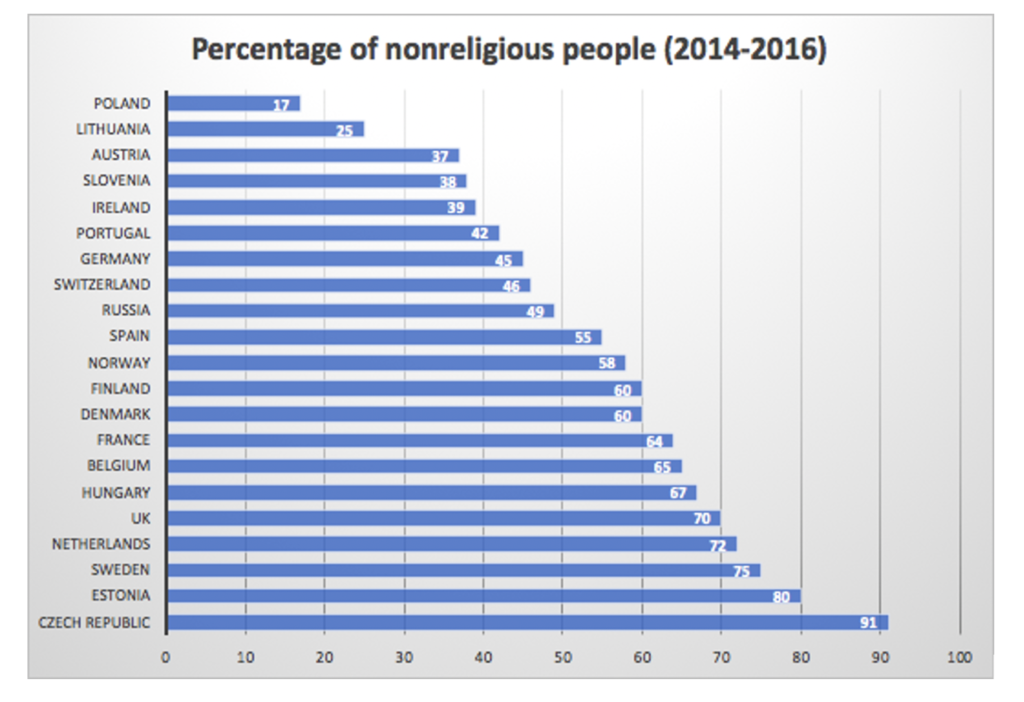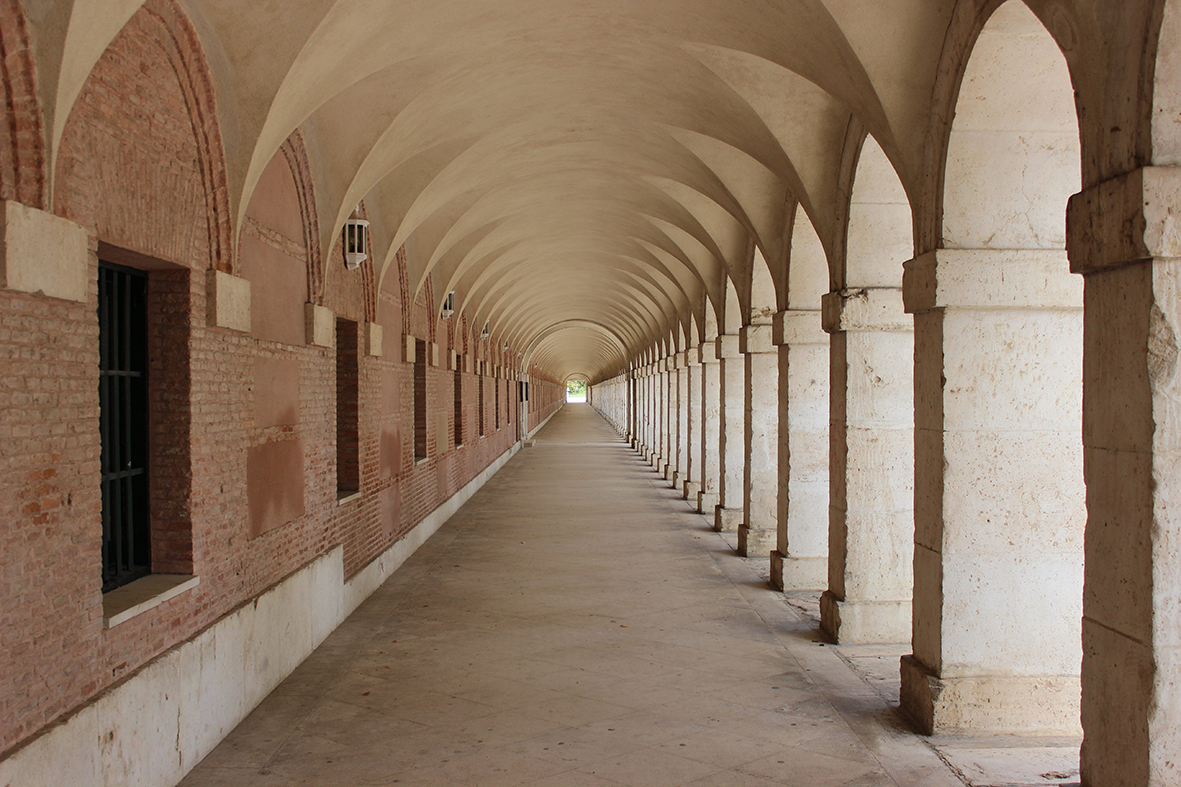Skating in empty churches
Skating in empty churches
The statistics don’t lie. Across Europe, the number of people following and participating in religion is on the decline. Few cases make this point more clear than Ireland, historically one of Europe’s most religiously active nations. In 1972, 91% of Irish attended church weekly. In 2019, only 36% attended a service monthly.[1]
This trend is replicated in many European nations. More and more Spaniards declare themselves atheists, agnostics, or non-believers,[2] and in 2017, the percentage of non-religious people surpassed the percentage of religious people for the first time in the Netherlands.[3] Both France[4] and Finland[5] have reported decreases in service attendance, and in the UK religious affiliation and belief in God is on the decline.[6] The trend continues beyond Europe, with fewer people attending churches or affiliating themselves with religious organisations in the United States and Canada.[7] [8]

Figure: percentage of nonreligious Europeans per country.[9]
Scandals, welfare state, and non-traditional families foster decrease
Each person has their individual reasons for leaving the church or not believing in the first place. However, several key trends can be identified that may explain the decline of Christianity.
First, we have become more and more aware of scandals and misbehaviour within religious institutions. This resulted in confidence in these organisations being lower than ever before.[10] For example, only 11% of British people say they trust churches and religious organisations, compared to 36% trusting the education system and 82% trusting university scientists.[11]
Additionally, structural changes in the role of the state are important in the decline of Christianity. In particular, the level of Christianity is known to decline in welfare states.[12] In welfare states, the government protects the health and wellbeing of all its citizens. This is achieved by offering social housing, healthcare, pensions, and other types of benefits.[13] With the development of welfare models since the 1950s, Christianity’s relevance has decreased.[14]
A third reason for the reducing popularity of Christianity may be the decrease in traditional families. A traditional family might be defined as a husband and wife with two or more children.[15] However, due to an increase in divorce rates[16] and a decline in fertility rates[17] ever since the 1960s, many children do not grow up in such a traditional family today. Religions usually rely heavily on families to raise religious children. According to the Huffington Post, the observed change in family structure may lead to a smaller number of children being raised religiously. As a result, myths and symbols may be less relevant to children growing up in nontraditional families. This can be illustrated by the fact that the Bible does not refer to children of divorced parents. When confronted with God’s criticism of divorce, these children may be less likely to identify themselves with religion.[18]
Church buildings are now offices and gyms
When portraying the statistics on the religious landscape, one effect of the decrease in Christianity is immediately visible: fewer churches are needed. What is happening with the redundant buildings? All over Europe, churches are being turned into hotels, swimming pools, and libraries.[19] [20] From offices in Sweden,[21] skate halls in Spain, and a hotel in Belgium, to a kindergarten in Germany, a museum in Ireland, and a bar in the United Kingdom:[22] the possibilities are endless. In the Netherlands, about twenty percent of former churches have already been transformed into community centers, museums, or gyms. Hundreds of church buildings are expected to be repurposed in the next few years.[23] [24]
Do you want to stay updated on the latest news on religion & society? Create an account on earsdashboard.com and receive free weekly updates.
[1] Being religious is now a countercultural identity
[2] Losing their religion? New report shows Spaniards are turning their backs on faith
[3] One-Fifth Of All Dutch Churches Are Now Secular Buildings
[4]L’Église de France se penche sur le renouveau des sanctuaires et de la piété populaire
[5] Uutissuomalainen: Puolet seurakuntatalouksista tekee miinusmerkkistä tulosta – Kotimaa
[6]UK secularism on rise as more than half say they have no religion
[7] In U.S., Decline of Christianity Continues at Rapid Pace
[8] Le tourisme religieux, une solution gagnant-gagnant
[9] Europe’s Young Adults and Religion
[10] Four Reasons for Decline of Religion
[11] UK secularism on rise as more than half say they have no religion
[12] Waarom gaan steeds minder mensen naar de kerk?
[13] Welfare State | Definition of Welfare State by Oxford Dictionary on Lexico.com also meaning of Welfare State
[14]The Welfare State in Europe
[15] What is a “traditional” family?
[16] Changing families in the European Union: trends and policy implications
[17] Fertility statistics – Statistics Explained
[18] Four Reasons for Decline of Religion
[19] Europe’s Empty Churches Go on Sale – WSJ
[20] Europe’s Abandoned Churches a Warning for America
[21] 11 New Uses for Old Churches
[22] 10 Innovative uses for old churches
[23] One-Fifth Of All Dutch Churches Are Now Secular Buildings
[24] De kerk als ‘slow tourism’






